Chapter 10.8: Baroque Painting
Caravaggio
Caravaggio (1571–1610), born and trained in Milan, stands as one of the most original and influential contributors to late 16th century and early 17th century European painting. He was known for painting figures, even those of classical or religious themes, in contemporary clothing, or as ordinary men and women. His inclusion of the seedier side of life was in marked contrast to the trends of the time. He used tenebrism and stark contrasts between partially lit figures and dark backgrounds to dramatize the effect.
A Police Record
With most artists we know about their lives and personalities from biographies that friends or contemporaries wrote about them. In the case of Michelangelo Merisi da Caravaggio, however, we know about his life primarily from police records! From these accounts, we learn that he had a bad temper and could be violent, and that he was frequently arrested and imprisoned for assault. He appears on the police records for mild offenses like carrying weapons without permission, as well as more serious ones where he is involved in violent fights. He was even questioned once because he “gave offense” to a woman and her daughter—one wonders what that could mean! Ultimately, he killed a man over a bet and spent the last few years of his life on the run from the police.
Some of Caravaggio’s most famous paintings include The Calling of St. Matthew, St. Thomas, The Conversion of St. Paul, The Entombment, and The Crowning of the Christ. His use of light and shadow was emulated by the Caravaggisti, the followers of Caravaggio, such as Orazio Gentileschi (1563–1639), Artemisia Gentileschi (1592–1652/3), Mattia Preti, Carlo Saraceni, and Bartolomeo Manfredi.
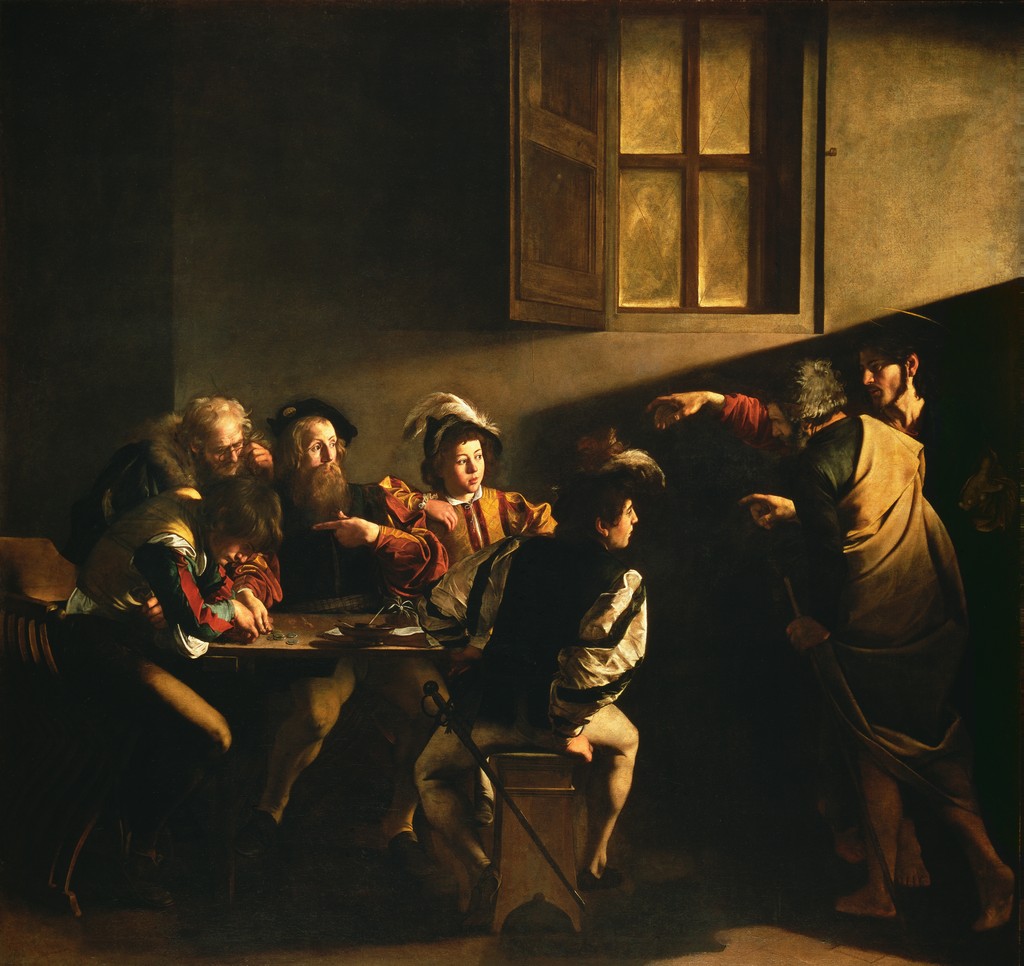
Caravaggio, Deposition (or Entombment)
After the crucifixion, some of Christ’s followers (Nicodemus, Joseph of Arimathea, Mary Magdalene), along with his Mother, remove Christ’s body from the cross and place it in the tomb.
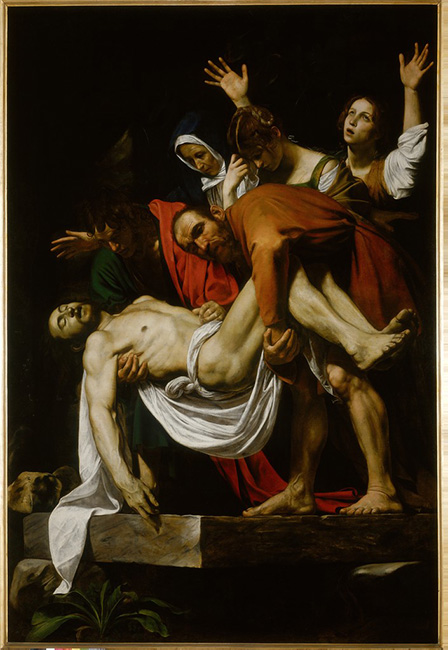
The Darkness (and the Light)
One of the first things you might notice about Caravaggio’s style, and we see it here in his painting of The Entombment, is the darkness. There’s actually a word for it: tenebroso, which means dark or gloomy. Caravaggio painted this scene as though it was happening in the black of night with almost a spot-light effect on the figures (doesn’t it look like a dark stage that has been illuminated with a spotlight?). There are several things that are important about this. There is no background—only darkness. No architecture, no landscape, and so as a result, we focus on the figures who are all located in the foreground of the painting. The spotlight effect of the lighting is very dramatic, and so we have very stark contrasts of light and dark. In other words, where modeling is usually a slow movement from light to dark, here we have very dark shadows right next to areas of bright illumination. The effect is very dramatic.
The Space
Everything is located very much in the foreground of the painting, very close to us in fact. Look at Christ’s body—its so close we feel like we can touch it. And look at the ledge of the tomb, it is foreshortened and so it juts out into our space. And look at the elbow of the figure in orange carrying Christ’s legs—it is foreshortened, too, and so it pops into our space. One of the main characteristics of Baroque art is the breaking down of the barrier between our space and the space of the painting, so we feel like we’re part of it. Baroque artists use foreshortening frequently.
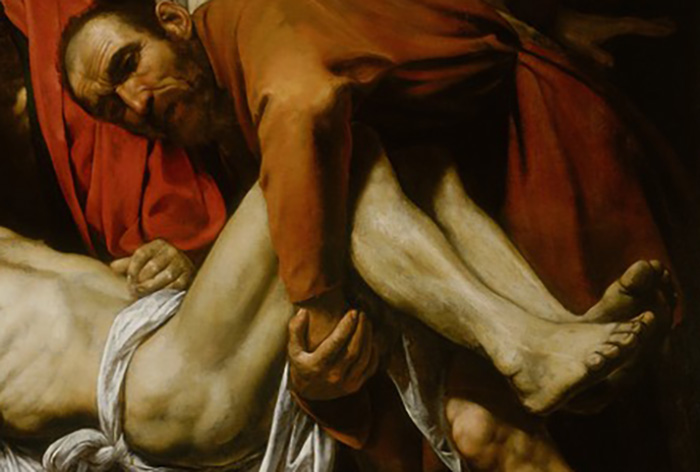
The Composition
Baroque artists were also interested in movement. Here we see the moment when Christ is being lowered into his tomb. It’s a process happening before our eyes—so we have a caught moment in time. We see that the figures form a diagonal line—another very common feature of Baroque art. In the High Renaissance, we saw compositions in the shape of a pyramid—a very stable shape. Here in Baroque art we see diagonals, or sometimes interlocking diagonals in the shape of an X. Caravaggio organized the composition so that it looks like the body of Christ is being lowered right into our space, as though we were standing in the tomb. One of the most important goals of Baroque art is to involve the viewer.
Realism
Baroque art also tends to be very real—not only do the figures look “regular,” but the artist is giving us a very real sense of this moment. The body of Christ looks truly dead, the figures struggle to hold the dead weight of his body and ease him down gently into his tomb.

The figures are all very ordinary looking, they are not idealized at all, like the figures of the High Renaissance. Look at the figure holding Christ’s legs. He almost looks like a homeless person. Look at his feet and legs—they are so ordinary looking—you can almost imagine the bottom of his feet being dirty. Even Christ looks rather like an ordinary man. They are figures we can relate to more —unlike the perfect figures of the High Renaissance. One of my favorite things about this painting is the figure who carries Christ’s shoulders. He has his arm under Christ’s torso and his fingers, as they reached around Christ, slipped into the wound that he received when he was on the cross (Christ was stabbed by a Roman soldier in the ribs). This may cause us to feel squeamish—but that’s the idea. Baroque art wants to get to you in your body—so you really feel it. When you know something in your mind it is one thing—but when you experience it with your body it is really different. Baroque art often wants you to have an experience that’s located in your body.
Videos
Caravaggio, Crucifixion of Saint Peter (3:39)
A moment of spiritual awakening: Caravaggio’s Calling of Saint Matthew (4:55)
Caravaggio, The Conversion of St. Paul (or The Conversion of Saul) (5:09)
Velázquez
Diego Velázquez is widely regarded as one of Spain’s most important and influential artists. He was an individualistic artist of the contemporary Baroque period and most well-known as a portrait artist. In addition to numerous renditions of scenes of historical and cultural significance, he painted scores of portraits of the Spanish royal family, other notable European figures, and commoners, culminating in the production of his masterpiece Las Meninas (1656). In Velazquez’s most famous painting, the artist includes himself as one of the subjects. Las Meninas (Spanish for “The Ladies in Waiting”) is a painting with complex and enigmatic composition that raises questions about reality and illusion, creating an uncertain relationship between the viewer and the figures depicted. Because of these complexities, Las Meninas has been one of the most widely analyzed works in Western painting.
Image and Video
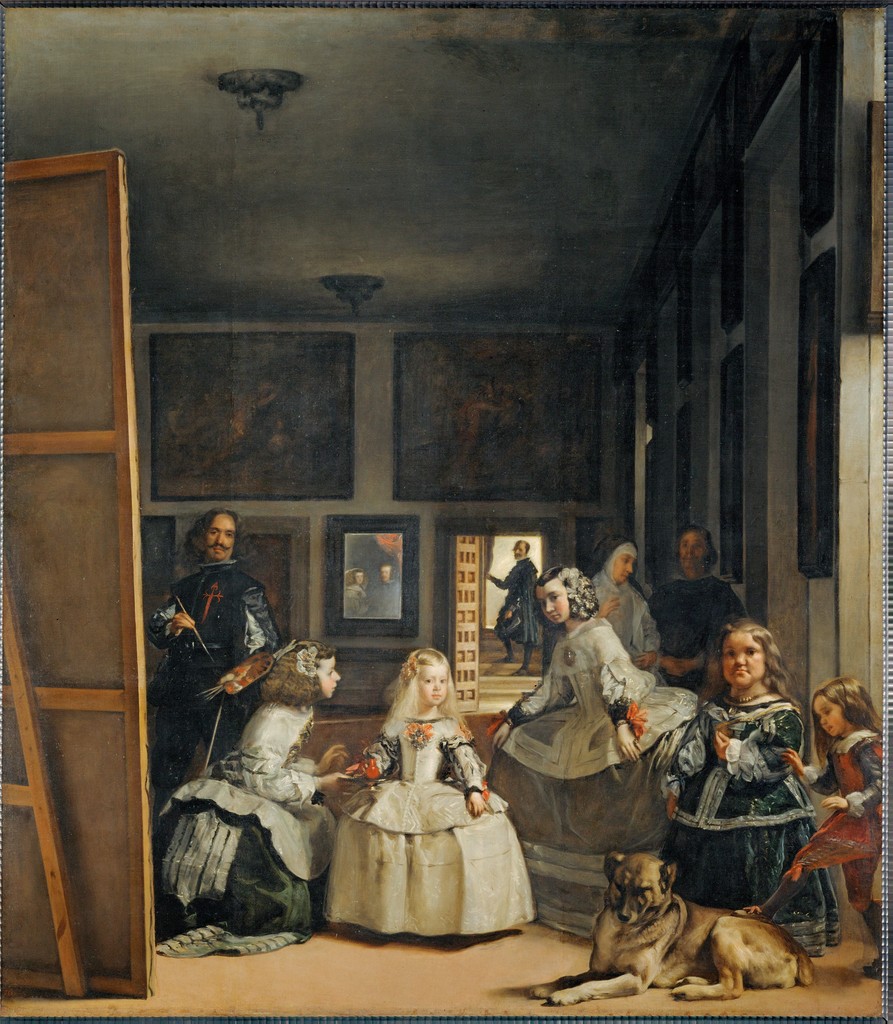
Velázquez, Las Meninas (6:00)
Gentileschi
Artemisia Gentileschi, born in Rome on July 8, 1593, became the most important Baroque woman painter of Early Modern Europe. As a woman, Artemisa was excluded from the traditional apprenticeship opportunities others enjoyed in successful artist’s studios. Instead she learned from her father, painter Orazio Gentileschi at an early age and was introduced to the likes of Michelangelo and many other important artists of the time. In particular, Caravaggio, whose chiaroscuro style (contrast of light and shadow) greatly influenced her work.
“Lord God, to whom all strength belongs, prosper what my hands are now to do for the greater glory of Jerusalem; for now is the time to recover your heritage and to further my plans to crush the enemies arrayed against us.” — Judith’s prayer before beheading Holofernes (Judith 13:4-5)
Image and Video
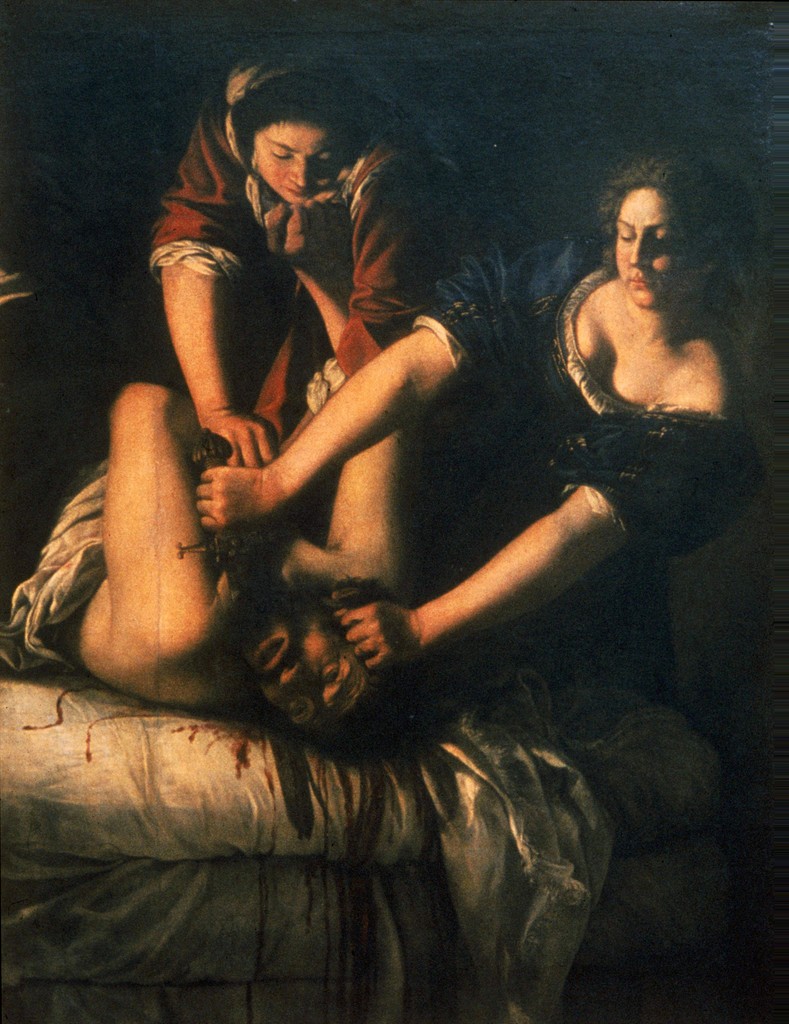
Gentileschi, Judith and Holofernes (4:01)
Rembrandt
Rembrandt Harmenszoon van Rijn (1606—1669) was a Dutch painter and etcher during the Dutch Golden Age, a period of great wealth and cultural achievement. Though Rembrandt’s later years were marked by personal tragedy and financial hardship, his etchings and paintings were popular throughout his lifetime, earning him an excellent reputation as an artist and teacher. In 1626, Rembrandt produced his first etchings, the wide dissemination of which would largely account for his international fame.
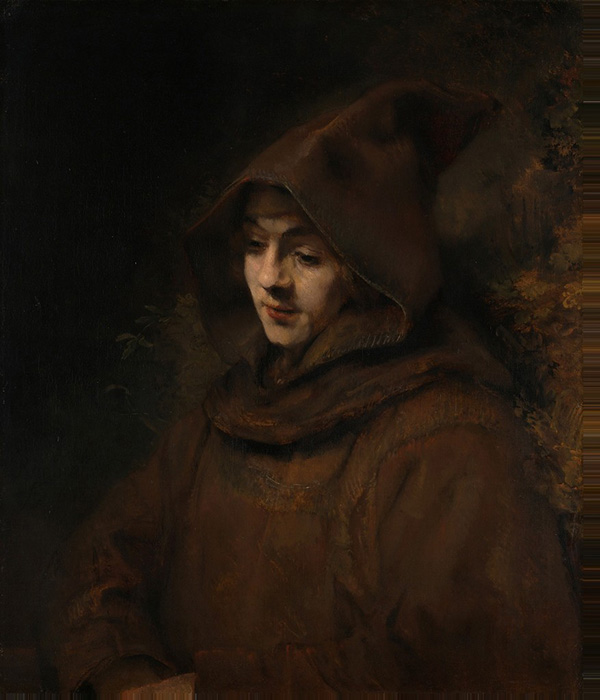
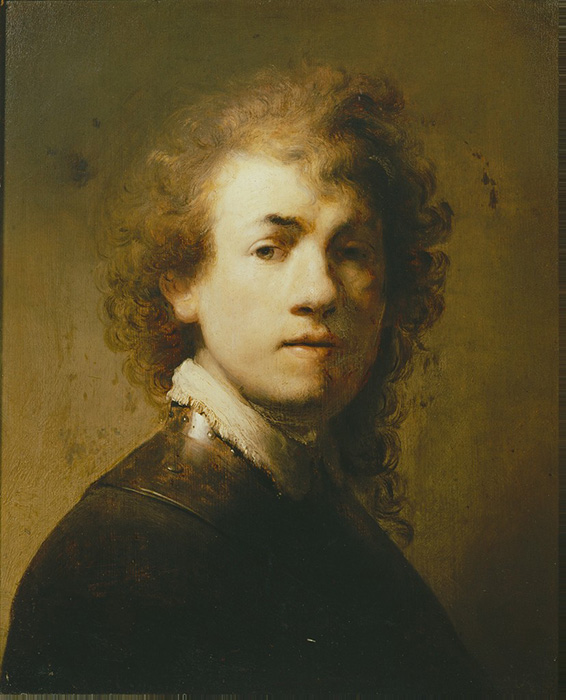
In later years, biblical themes were still often depicted, but his emphasis shifted from dramatic group scenes to intimate portrait-like figures (such as in James the Apostle, 1661). In his last years, Rembrandt painted his most deeply reflective self-portraits (he painted 15 from 1652 to 1669) and several moving images of both men and women (such as The Jewish Bride, c. 1666) in love, in life, and before God.
Media Attributions
- Figure 1. Caravaggio, The Calling of Saint Matthew, 1599-1600, oil on canvas. (San Luigi dei Francesi, Rome, Italy; Image source: © 2006, SCALA, Florence/ART RESOURCE, N.Y. via Artstor. Used with permission, for education use only)
- Figure 2. Michelangelo Merisi da Caravaggio, Deposition. Oil on canvas, c. 1602-1604 (Image source: SCALA, Florence/ART RESOURCE, N.Y. via Artstor. Used with permission, for education use only)
- Figure 3. Details of Caravaggio’s Deposition. Michelangelo Merisi da Caravaggio, Deposition. Oil on canvas, c. 1602-1604 (Image source: Khan Academy, for educational use only)
- Figure 4. Details of Caravaggio’s Deposition. Michelangelo Merisi da Caravaggio, Deposition. Oil on canvas, c. 1602-1604 (Image source: Khan Academy, for educational use only)
- Figure 5. Diego Velásquez, Las Meninas, or the Family of Phillip IV. Oil on canvas, 1656 (Image source: Erich Lessing Culture and Fine Arts Archives/ART RESOURCE, N.Y. via Artstor. Used with permission, for education use only)
- Figure 6. Artemesia Gentileschi, Judith and Holofernes. Oil on canvas, 1620-21. Image source: SmartHistory) is licensed under a CC BY-NC-SA (Attribution NonCommercial ShareAlike) license
- Figure 7. Rembrandt, Titus as a Monk, 1660, oil on canvas.(Rijksmuseum, Amsterdam; Aankoop met steun van de Vereniging Rembrandt; Image source: Rijksmuseum via Artstor. Used with permission, for education use only)
- Figure 8. Rembrandt, Self Portrait, 1629, oil on panel. (Germanisches Nationalmuseum Nürnberg, Nuremburg, Germany; Image source: SCALA, Florence/ART RESOURCE, N.Y. via Artstor. Used with permission, for education use only)
Candela Citations
- aravaggio's Deposition: History and Appreciation of Art II. Provided by: Lumen Learning. Retrieved from: https://www.collegesidekick.com/study-guides/zeliart102/caravaggios-deposition. License: CC BY-SA: Attribution-ShareAlike
- Painting of the Baroque Period: Boundless Art History. Provided by: Lumen Learning. Retrieved from: https://www.collegesidekick.com/study-guides/boundless-arthistory/painting-of-the-baroque-period. License: CC BY-SA: Attribution-ShareAlike
- Artemisia Gentileschi, Judith Slaying Holofernes. Authored by: Dr. Esperanu00e7a Camara. Provided by: Smarthistory. Retrieved from: https://smarthistory.org/gentileschi-judith-slaying-holofernes/. License: CC BY-NC-SA: Attribution-NonCommercial-ShareAlike
- How to recognize Baroque art. Authored by: Dr. Beth Harris and Dr. Steven Zucker. Provided by: Smarthistory. Retrieved from: https://smarthistory.org/how-to-recognize-baroque-art/. License: CC BY-NC-SA: Attribution-NonCommercial-ShareAlike
- The Dutch Painters: Boundless Art History. Provided by: Lumen Learning. Retrieved from: https://www.collegesidekick.com/study-guides/boundless-arthistory/the-dutch-painters. License: CC BY-SA: Attribution-ShareAlike

